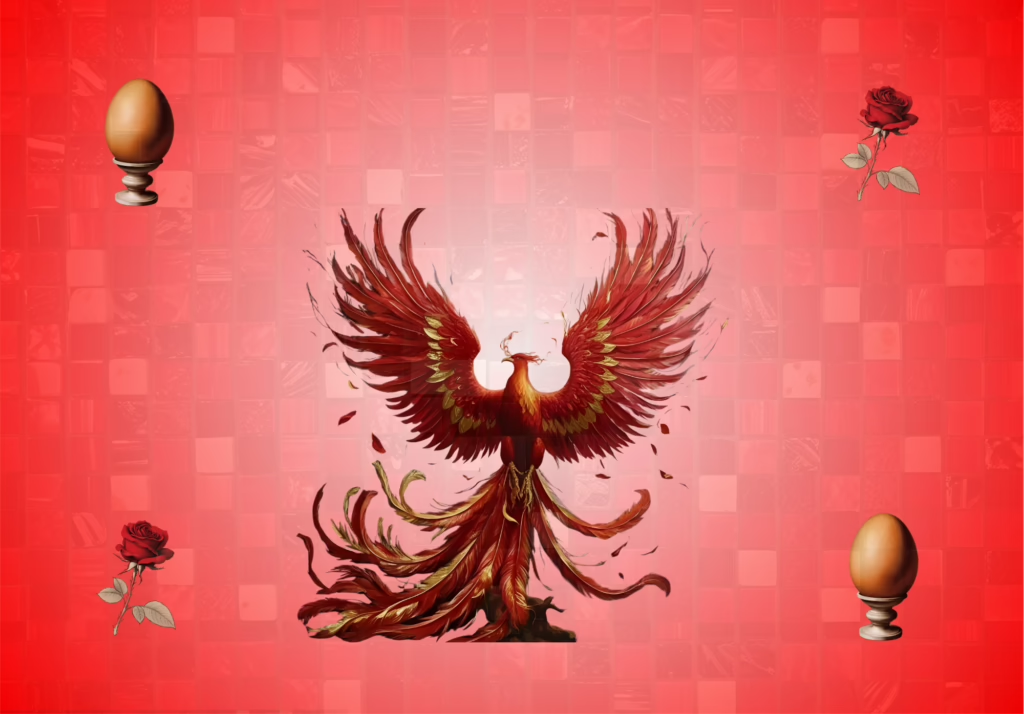Phoenix, archetype of death, archetype of rebirth

The story of the phoenix begins in Egypt, in mysterious and forgotten cults
The phoenix transmigrates into Greco-Roman culture and spreads to the borders of the West
‘its feathers are part gold, part bright red: above all it is very like the eagle in outline and size’ (Herodotus, Histories, Book II, Chapter 73)
in alchemy the phoenix is always associated with gold, the metal of rubedo, the path of matter that reaches its perfection
it is a solitary being and every five hundred years, according to Herodotus, it builds itself a nest and allows itself to be consumed by the flames of the sun, then from its ashes a new specimen rises, young, identical and immortal
And again according to Herodotus, this bird is associated with myrrh
‘he fashions an egg of myrrh, as large as he is able to carry, and then tries to fly with this load; having completed the test, he empties the egg to put the father inside it and with more myrrh he covers the hole opened in the egg to introduce the father (the latter, placed inside the egg, restores its original weight); and after having thus wrapped it in myrrh, he carries it to Egypt to the sanctuary of Helios’.
the poem De ave Phoenice, attributed to Lactantius, describes the phoenix building its nest with various aromatic substances, including incense
Non casiae mitis nec olentis vimen acanthi
Nec turis lacrimae guttaque pinguis abest;
His addit teneras nardi pubentis aristas
Et sociat myrrhae vim, panacea, tuam”
“There is no lack of branches of the mild cassia, nor fragrant shoots of the acanthus,
nor the tears of incense, nor the fat drops (of resin);
To these he adds the tender spikes of the luxuriant spikenard
And joins the strength of myrrh, O panacea, thine”.
Gold, incense, myrrh
the gifts of the wise East to the newborn Jesus
Christ is the new phoenix
The rubedo becomes full in the logic of incarnation, is incarnated in the Christian context
Alchemy and mysteries of the divine

Leave a Reply